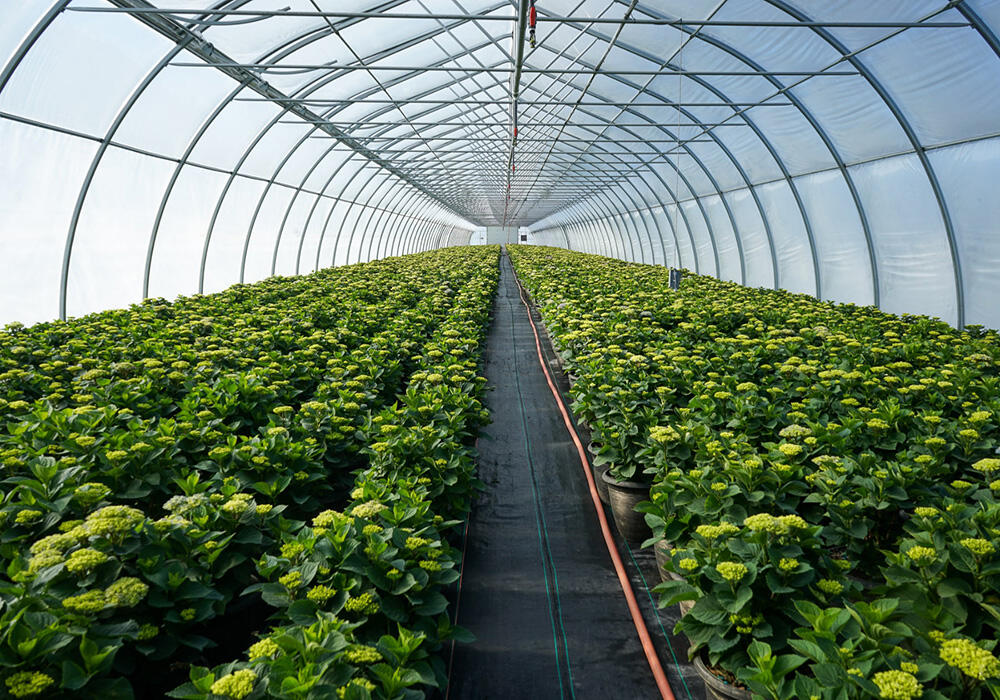High tunnel greenhouses, commonly referred to as hoop houses, have rapidly emerged as an indispensable asset for farmers aiming to produce fresh food throughout the year. These cost-effective, unheated structures, covered with plastic sheeting, provide a sheltered and moderately warm environment for delicate crops. By doing so, they not only accelerate plant growth but also shield plants from harsh weather conditions, making them a game-changer in modern agriculture. In this post, we will explore the multifaceted benefits of high tunnel greenhouses, including extended growing seasons, enhanced crop quality, simplified pest control, and a reduced environmental footprint.
Extended Growing Seasons: A Harvest Advantage
The primary allure of high tunnel greenhouses lies in their ability to significantly extend the growing season beyond the limitations of traditional open - field farming. In conventional outdoor settings, the arrival of spring frost or the intense heat of summer can spell disaster for young seedlings, effectively halting the growing process. High tunnel greenhouses, however, act as a solar collector. The transparent plastic covering traps solar radiation, warming the air and soil inside the tunnel. This creates a microclimate where the temperature remains more stable and favorable for plant growth.
As a result, farmers can sow seeds or transplant seedlings weeks earlier in the spring, taking advantage of the warmer soil and air temperatures. Similarly, in the fall, the high tunnel provides a buffer against the encroaching cold, allowing crops to remain in the ground longer and reach full maturity. This extended growing period not only leads to multiple harvests in a single year but also enables farmers to enter the market earlier and stay in it later than their open - field counterparts. They can offer premium, out - of - season produce to consumers when other vendors have yet to start or have already finished their harvests, translating into increased profits and a competitive edge in the market.
Enhanced Crop Quality: Nurturing Healthy Plants
High tunnel greenhouses do far more than just extend the growing season; they also play a crucial role in enhancing the overall quality of crops. The controlled environment within the tunnel protects plants from a variety of external stressors. Severe storms with strong winds can damage delicate plant structures, but the sturdy framework and protective covering of the high tunnel keep plants safe. Extreme temperature fluctuations, which can shock plants and affect their growth, are minimized, allowing for a more consistent development process.
Moreover, the enclosed nature of high tunnels acts as a barrier against many common pests and diseases. Fewer pests mean less damage to the crops, resulting in cleaner, more marketable produce. The stable climate also promotes stronger plant growth. With reduced stress, plants can allocate more energy to developing robust root systems, producing larger fruits, and enhancing their nutritional content. Additionally, the curved design of high tunnels simplifies water management. Farmers can more easily install and manage irrigation systems, ensuring that crops receive the precise amount of water they need, avoiding both under - and over - watering, which can lead to root rot or stunted growth.
Simplified Pest Control: A Sustainable Approach
Pest control is a significant advantage of high tunnel farming. The low, semi - enclosed structure of high tunnels acts as a natural deterrent to many pests. Flying insects have a harder time entering the tunnel, and crawling pests find it more difficult to access the crops. This reduction in pest pressure allows farmers to rely less on chemical pesticides. Instead, they can adopt Integrated Pest Management (IPM) strategies.
IPM combines various techniques such as introducing beneficial insects like ladybugs, which feed on aphids, using sticky traps to catch flying pests, and regular scouting to monitor pest populations. By maintaining a balanced ecosystem within the high tunnel, farmers can effectively control pests while minimizing the use of harmful chemicals. This not only reduces production costs associated with purchasing pesticides but also appeals to environmentally conscious consumers who are increasingly demanding chemical - free, sustainable food options.
Reduced Environmental Footprint: Farming Sustainably
Sustainability is a key concern in modern agriculture, and high tunnel greenhouses are well - positioned to meet these demands. These structures enable farmers to grow out - of - season crops closer to urban centers, reducing the need for long - distance transportation. Shorter delivery distances mean lower fuel consumption and decreased carbon emissions from trucks, contributing to a more sustainable food supply chain.
In addition, the construction of high tunnel greenhouses often involves the use of recycled materials. Salvaged pipes, old storm - window frames, and other scrap materials can be repurposed to build the framework, minimizing waste and reducing the environmental impact of construction. As consumers become more environmentally aware and show a preference for locally grown, sustainable produce, high tunnel greenhouses provide farmers with a way to meet this demand while also protecting natural resources such as soil and water.
In conclusion, the benefits of high tunnel greenhouses are numerous and far - reaching. They extend the growing season, enhance crop quality, simplify pest control through sustainable methods, and reduce the environmental footprint of farming. In an era of changing climate and evolving market demands, high tunnel greenhouses offer a practical and cost - effective solution for farmers. By embracing these structures, farmers can not only ensure a more stable income but also contribute to a more sustainable and resilient agricultural future.


